Abstract
Experiments were carried out to investigate the effects of ambient temperatures on the induction of transmissible gastroenteritis in feeder pigs 2 to 3 months old. Pigs maintained at a high temperature (30 ± 2°C) and exposed to the virulent transmissible gastroenteritis virus did not show clinical signs of the disease during their maintenance at the high temperature. On the other hand, a sudden decrease in the ambient temperature, either before or after virus inoculation, induced severe disease in feeder pigs exposed to the virus. However, continuous maintenance of pigs at the low temperature (4 ± 1°C) tended to somewhat reduce the frequency of occurrence of signs in proportion to the length of the maintenance periods at that temperature. Pigs raised at temperatures that fluctuated between 20 ± 2 and 4 ± 1°C every 24 h developed profuse diarrhea. The duration of clinical signs was longer in pigs maintained under the fluctuating temperatures than in those at the constantly low temperature. With one exception, antibody against transmissible gastroenteritis virus was demonstrated in sera collected from pigs both with and without clinical signs. Antibody titers obtained, however, were somewhat higher in sera collected from pigs that had developed clinical signs than in those from pigs that had endured the infection without showing signs.
Full text
PDF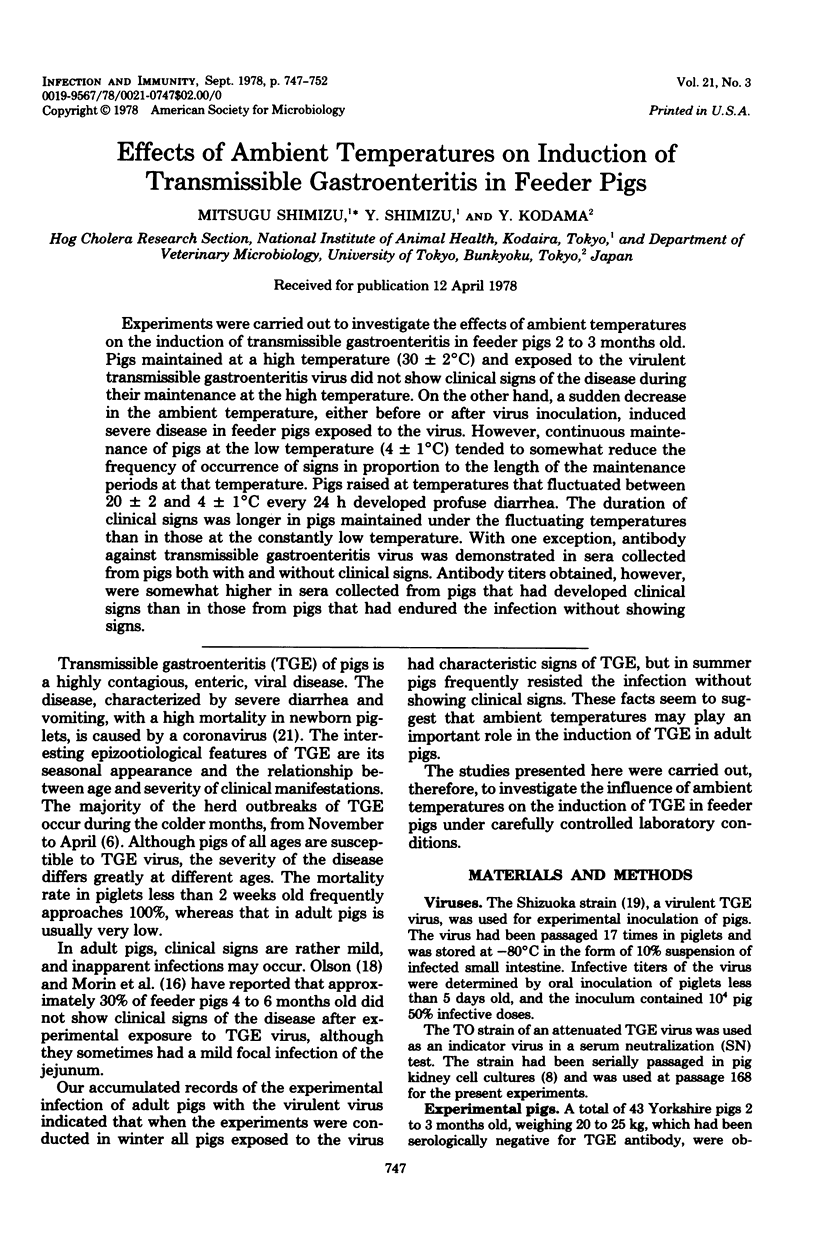
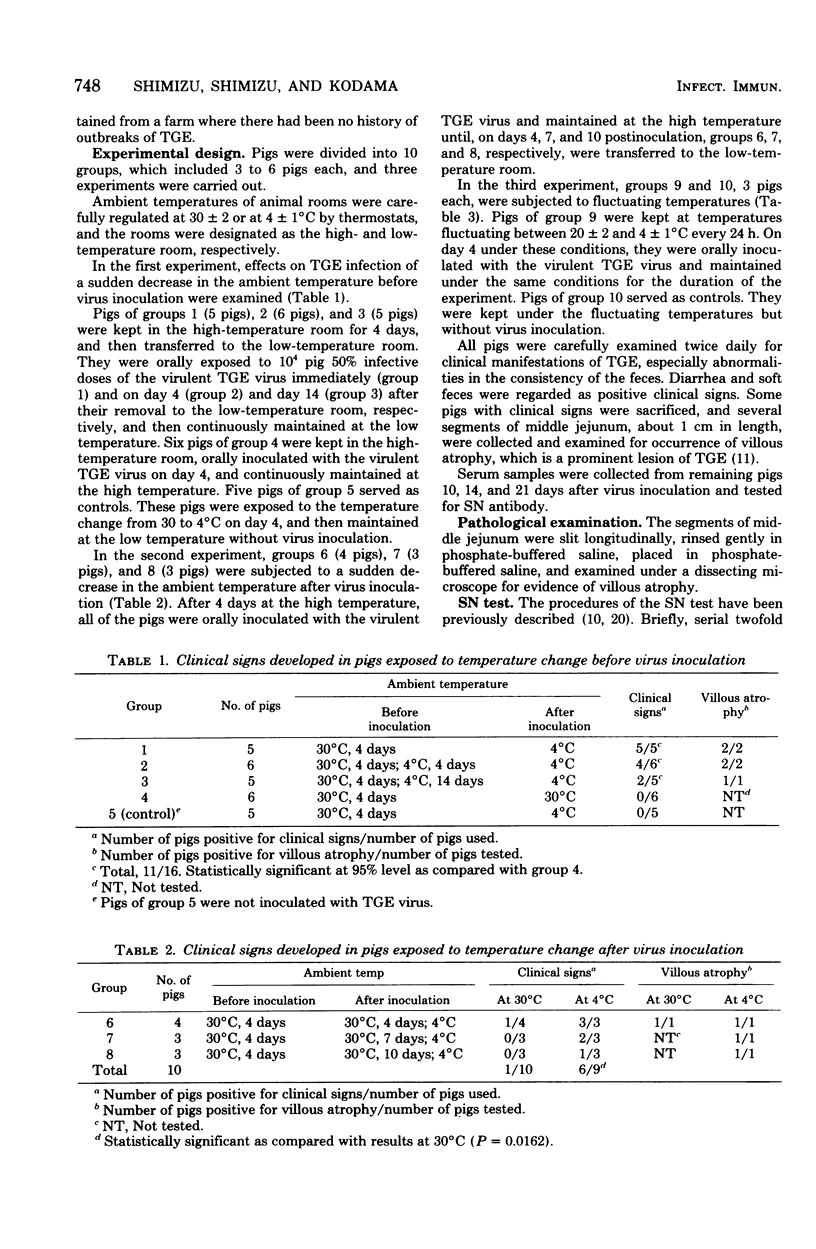
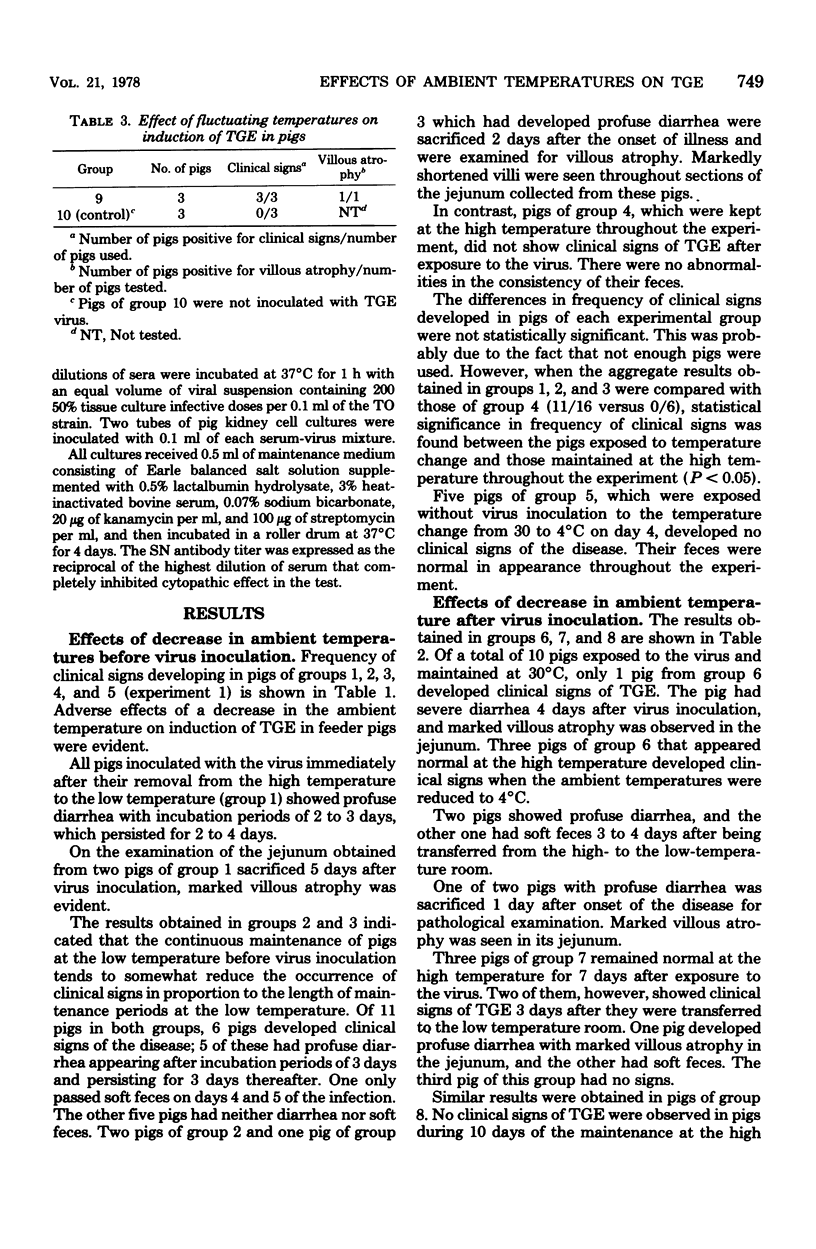
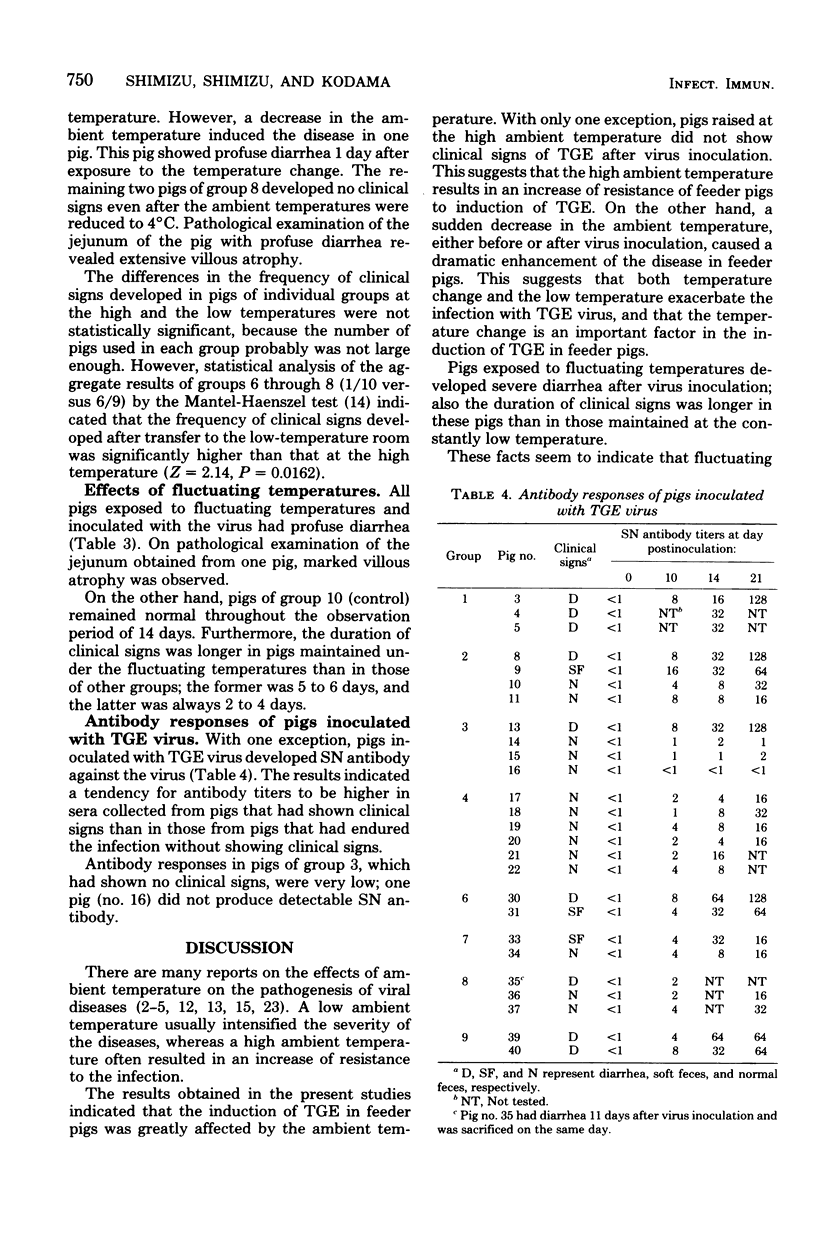
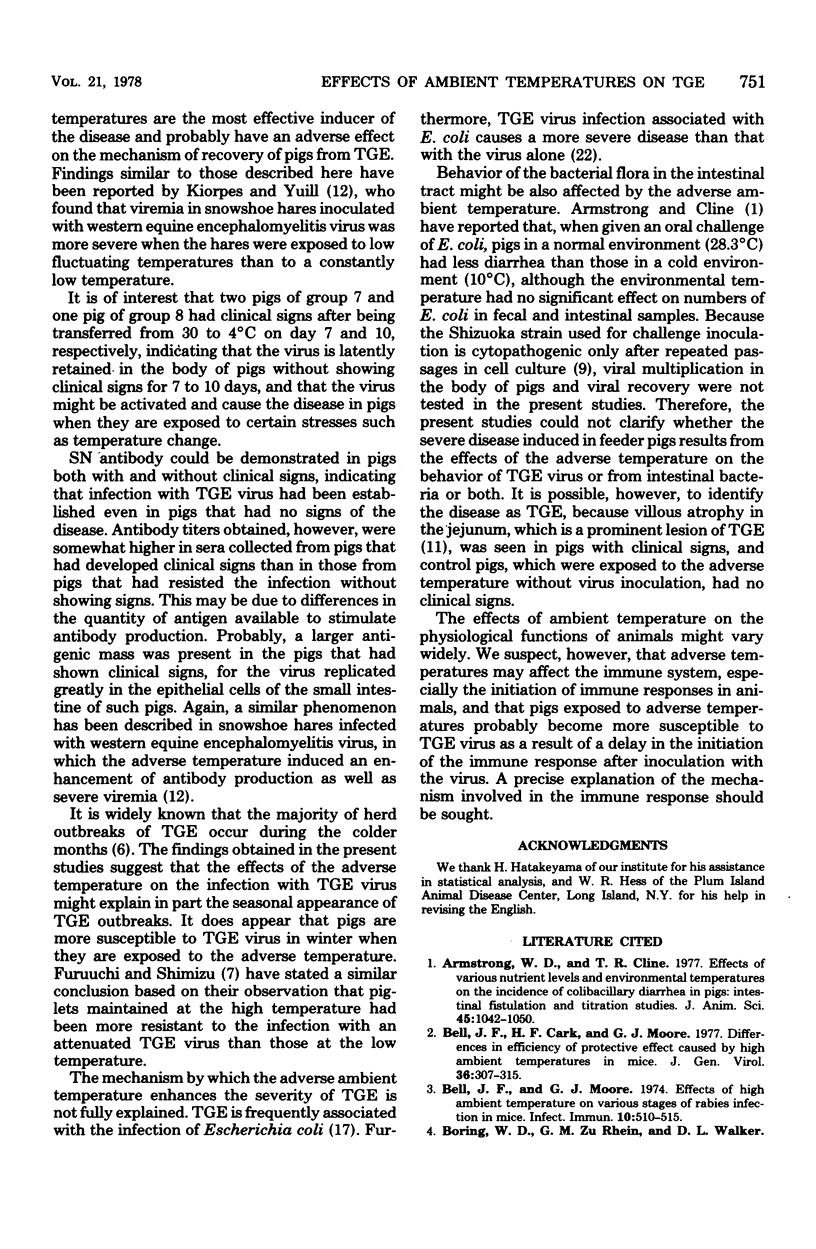
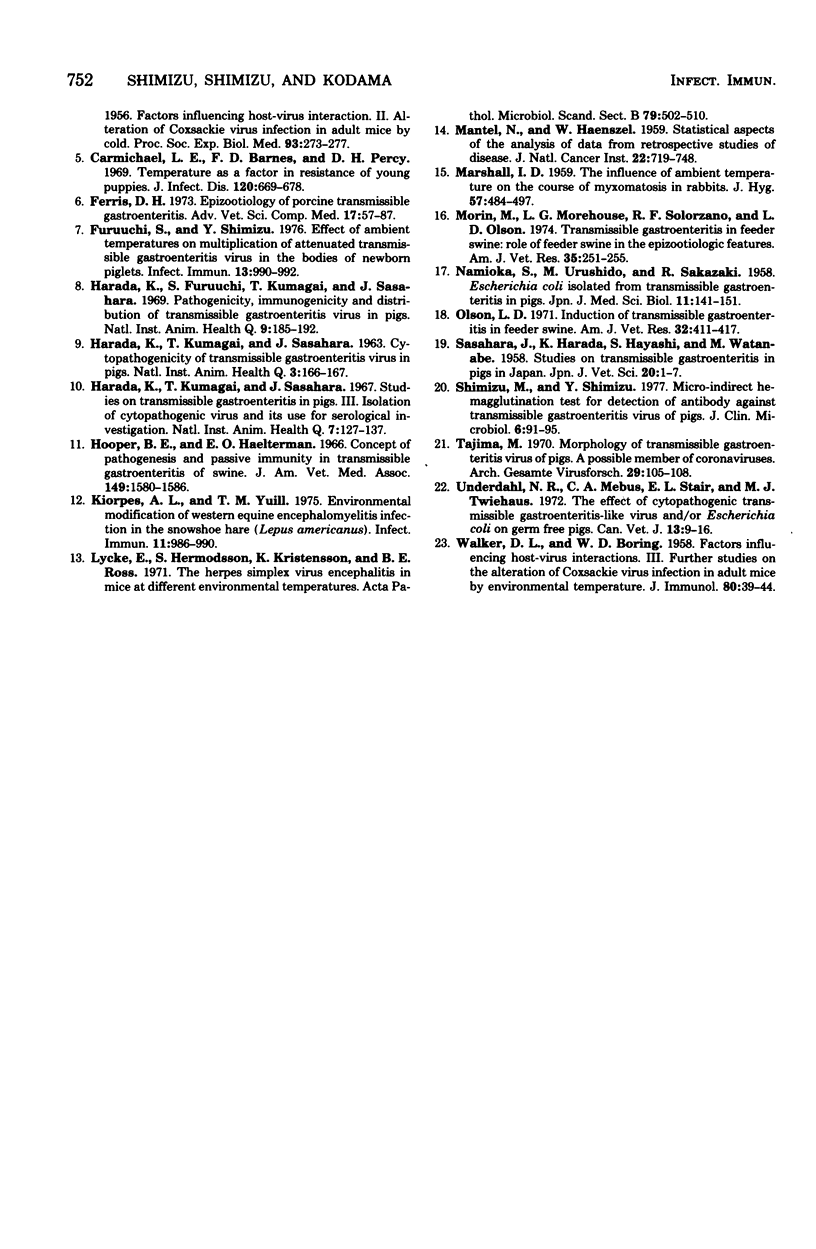
Selected References
These references are in PubMed. This may not be the complete list of references from this article.
- Armstrong W. D., Cline T. R. Effects of various nutrient levels and enviromental temperatures on the incidence of colibacillary diarrhea in pigs: intestinal fistulation and titration studies. J Anim Sci. 1977 Nov;45(5):1042–1050. doi: 10.2527/jas1977.4551042x. [DOI] [PubMed] [Google Scholar]
- Bell J. F., Clark H. F., Moore G. J. Differences in efficiency of protective effect caused by high ambient temperature in mice infected with diverse substrains of rabies virus. J Gen Virol. 1977 Aug;36(2):307–315. doi: 10.1099/0022-1317-36-2-307. [DOI] [PubMed] [Google Scholar]
- Bell J. F., Moore G. J. Effects of high ambient temperature on various stages of rabies virus infection in mice. Infect Immun. 1974 Sep;10(3):510–515. doi: 10.1128/iai.10.3.510-515.1974. [DOI] [PMC free article] [PubMed] [Google Scholar]
- Carmichael L. E., Barnes F. D., Percy D. H. Temperature as a factor in resistance of young puppies to canine herpesvirus. J Infect Dis. 1969 Dec;120(6):669–678. doi: 10.1093/infdis/120.6.669. [DOI] [PubMed] [Google Scholar]
- Ferris D. H. Epizootiology of porcine transmissible gastroenteritis (TGE). Adv Vet Sci Comp Med. 1973;17:57–86. [PubMed] [Google Scholar]
- Furuuchi S., Shimizu Y. Effect of ambient temperatures on multiplication of attenuated transmissible gastroenteritis virus in the bodies of newborn piglets. Infect Immun. 1976 Mar;13(3):990–992. doi: 10.1128/iai.13.3.990-992.1976. [DOI] [PMC free article] [PubMed] [Google Scholar]
- Harada K., Furuuchi S., Kumagai T., Sasahara J. Pathogenicity, immunogenicity and distribution of transmissible gastroenteritis virus in pigs. Natl Inst Anim Health Q (Tokyo) 1969 Winter;9(4):185–192. [PubMed] [Google Scholar]
- Harada K., Kumagai T., Sasahara J. Studies on transmissible gastroenteritis in pigs. 3. Isolation of cytopathogenic viurs and its use for serological investigation. Natl Inst Anim Health Q (Tokyo) 1967 Fall;7(3):127–137. [PubMed] [Google Scholar]
- Kiorpes A. L., Yuill T. M. Environmental modification of western equine encephalomyelitis infection in the snowshoe hare (Lepus americanus). Infect Immun. 1975 May;11(5):986–990. doi: 10.1128/iai.11.5.986-990.1975. [DOI] [PMC free article] [PubMed] [Google Scholar]
- Lycke E., Hermodsson S., Kristensson K., Roos B. E. The herpes simplex virus encephalitis in mice at different environmental temperatures. Acta Pathol Microbiol Scand B Microbiol Immunol. 1971;79(4):502–510. doi: 10.1111/j.1699-0463.1971.tb03801.x. [DOI] [PubMed] [Google Scholar]
- MANTEL N., HAENSZEL W. Statistical aspects of the analysis of data from retrospective studies of disease. J Natl Cancer Inst. 1959 Apr;22(4):719–748. [PubMed] [Google Scholar]
- MARSHALL I. D. The influence of ambient temperature on the course of myxomatosis in rabbits. J Hyg (Lond) 1959 Dec;57:484–497. doi: 10.1017/s0022172400020325. [DOI] [PMC free article] [PubMed] [Google Scholar]
- Morin M., Morehouse L. G., Solorzano R. F., Olson L. D. Transmissible gastroenteritis in feeder swine: role of feeder swine in the epizootiologic features. Am J Vet Res. 1974 Feb;35(2):251–255. [PubMed] [Google Scholar]
- Olson L. D. Induction of transmissible gastroenteritis in feeder swine. Am J Vet Res. 1971 Mar;32(3):411–417. [PubMed] [Google Scholar]
- Shimizu M., Shimizu Y. Micro-indirect hemagglutination test for detection of antibody against transmissible gastroenteritis virus of pigs. J Clin Microbiol. 1977 Aug;6(2):91–95. doi: 10.1128/jcm.6.2.91-95.1977. [DOI] [PMC free article] [PubMed] [Google Scholar]
- Tajima M. Morphology of transmissible gastroenteritis virus of pigs. A possible member of coronaviruses. Brief report. Arch Gesamte Virusforsch. 1970;29(1):105–108. doi: 10.1007/BF01253886. [DOI] [PMC free article] [PubMed] [Google Scholar]
- Underdahl N. R., Mebus C. A., Stair E. L., Twiehaus M. J. The effect of cytopathogenic transmissible gastroenteritis-like viruses and-or Escherichia coli on germfree pigs. Can Vet J. 1972 Jan;13(1):9–16. [PMC free article] [PubMed] [Google Scholar]
- WALKER D. L., BORING W. D. Factors influencing host-virus interactions. III. Further studies on the alteration of Coxsackie virus infection in adult mice by environmental temperature. J Immunol. 1958 Jan;80(1):39–44. [PubMed] [Google Scholar]


